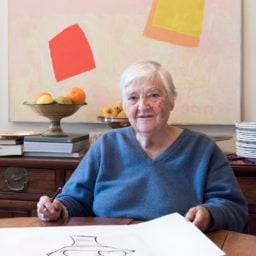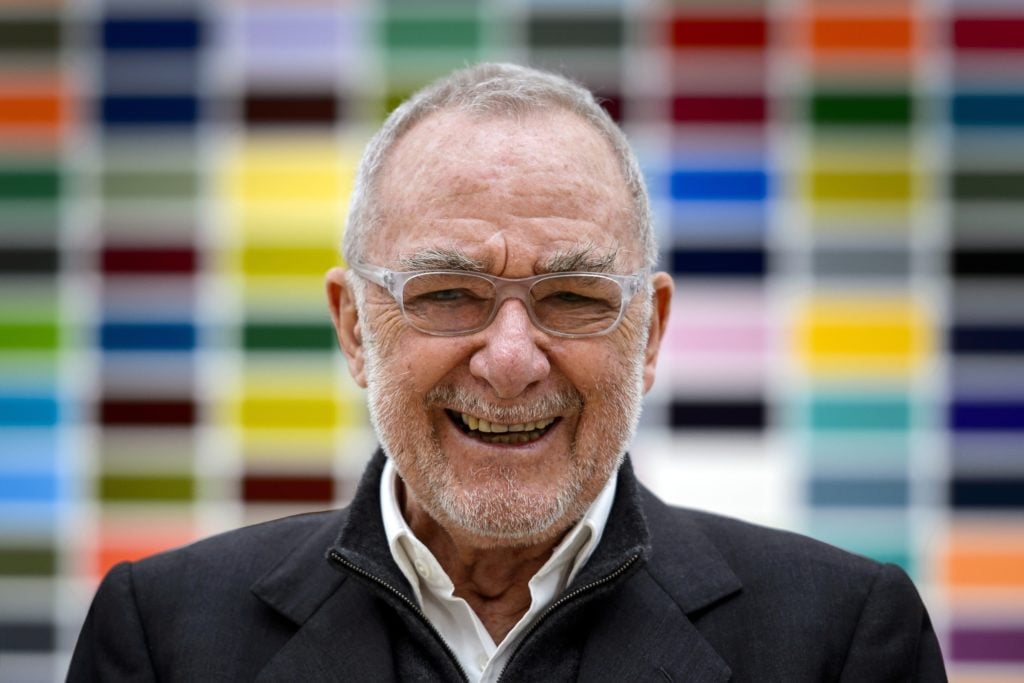

Gerhard Richter, born February 9, 1932, is a driving force in the art world, and one of the most expensive European artists alive. His works walk the line between paintings and photography, one of the most important developments in art in the past century. He has never really adhered to a specific style or movement; nor has he stuck to a single medium. Richter has made art that is aware of its own limitations, and played with the idea of chance in photography and painting. His impact on the art world is undeniable.
On the occasion of his 85th birthday, here are some inspiring quotes by the ground-breaking artist.

Gerhard Richter, Abstraktes Bild (610-1), 1985. Courtesy of Phillips.
1. On the purpose of art
“Picturing things, taking a view, is what makes us human; art is making sense and giving shape to that sense. It is like the religious search for God.”
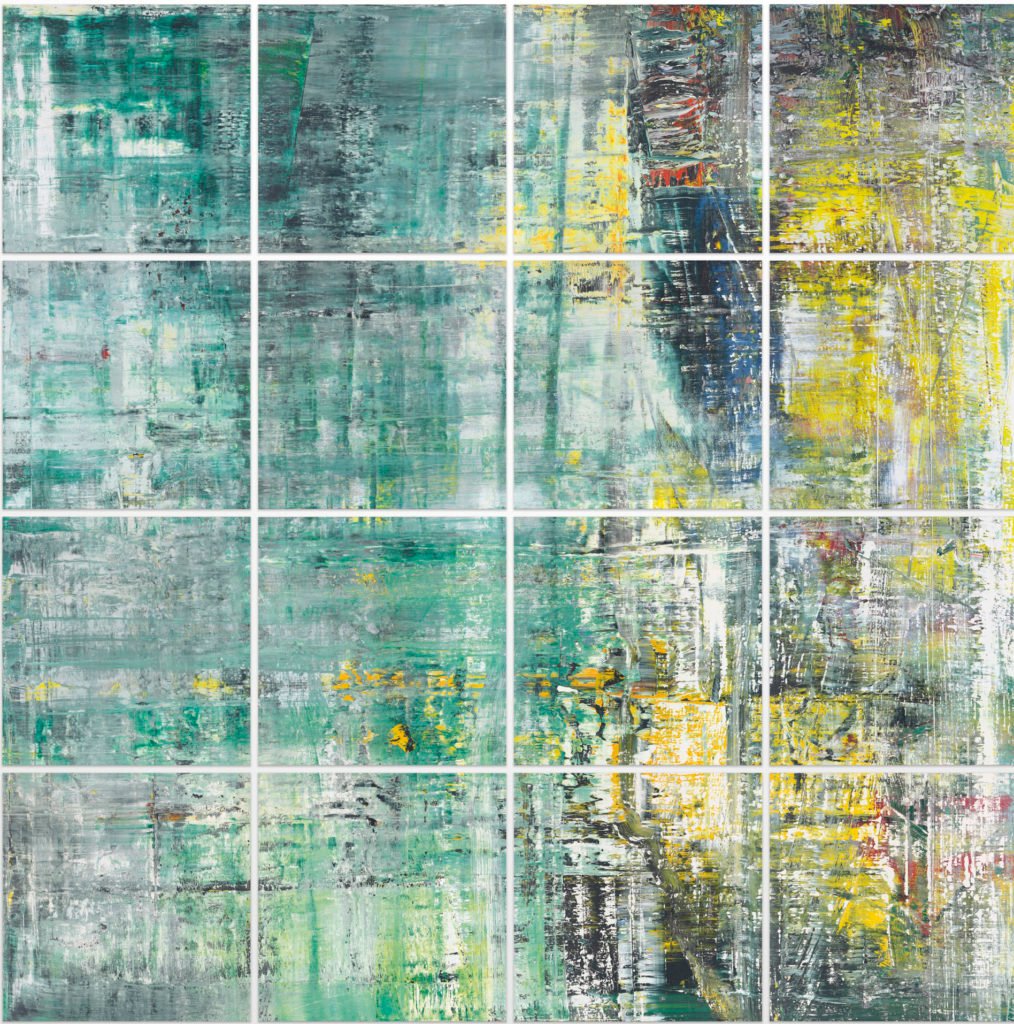
Gerhard Richter, Cage Grid (Komplettes Set), 2011. Courtesy of Phillips.
2. On the nature of reality
“I don’t mistrust reality, of which I know next to nothing. I mistrust the picture of reality conveyed to us by our senses, which is imperfect and circumscribed.”
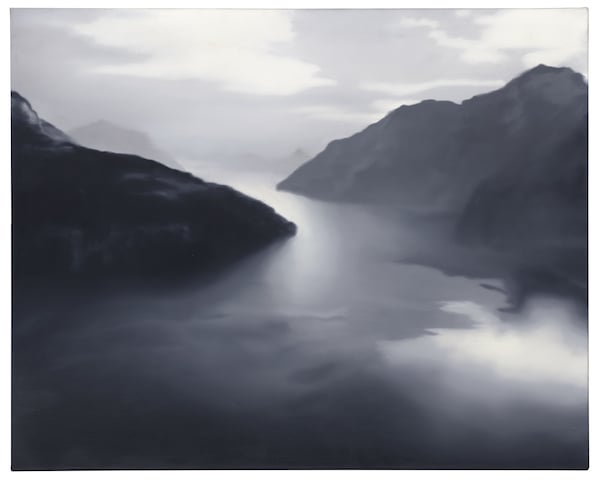
Lot 8, Gerhard Richter, Vierwaldstätter See (Lake Lucerne) (1969). Courtesy of Christie’s Images Ltd. 2015.
3. On painting and passion
“One has to believe in what one is doing, one has to commit oneself inwardly, in order to do painting. Once obsessed, one ultimately carries it to the point of believing that one might change human beings through painting. But if one lacks passionate commitment, there is nothing left to do. Then it is best to leave it alone. For basically painting is total idiocy.”

Gerhard Richter, STRIP (926-2) (2012). Courtesy of Wako Works of Art, Japan.
4. On having an artist community
“Contact with like-minded painters—a group means a great deal to me: nothing comes in isolation. We have worked out our ideas largely by talking them through. Shutting myself away in the country, for instance, would do nothing for me. One depends on one’s surroundings. And so the exchange with other artists—and especially the collaboration with Lueg and Polke—matters a lot to me: it is part of the input that I need.”

Gerhard Richter, Achtzehn Farbtafeln (Eighteen Colour Charts), 1966. © Gerhard Richter.
5. On truth
“Since there is no such thing as absolute rightness and truth, we always pursue the artificial, leading, human truth. We judge and make a truth that excludes other truths. Art plays a formative part in this manufacture of truth.”
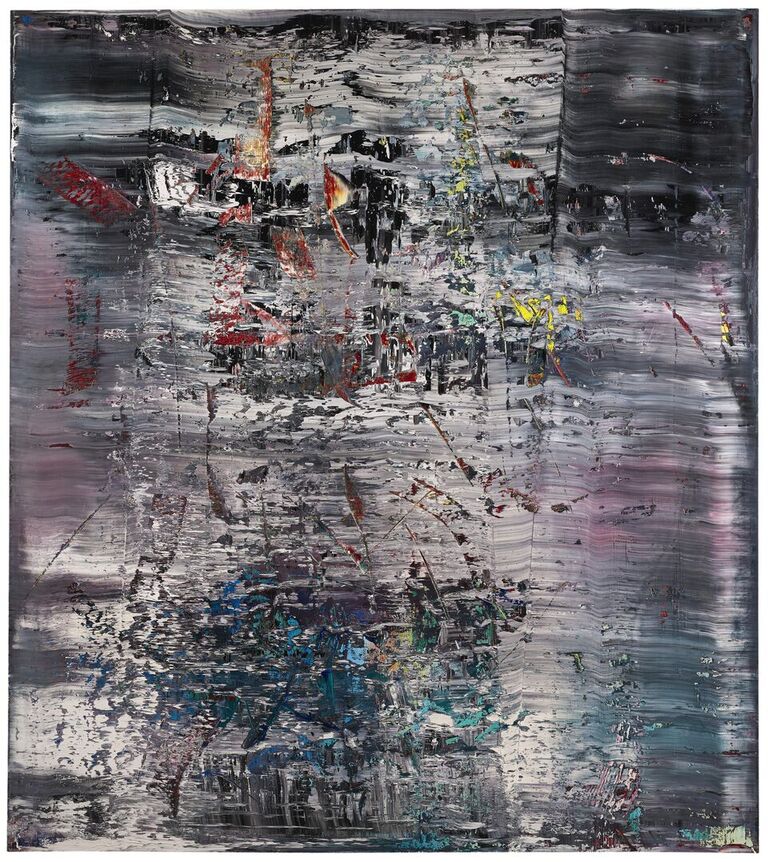
Gerhard Richter, Abstraktes Bild (725-4) (1990). Courtesy Sotheby’s London.
6. On art and religion
“Art is not a substitute religion: it is a religion (in the true sense of the word: ‘binding back,’ ‘binding’ to the unknowable, transcending reason, transcendent being). But the church is no longer adequate as a means of affording experience of the transcendental, and of making religion real—and so art has been transformed from a means into the sole provider of religion: which means religion itself.”
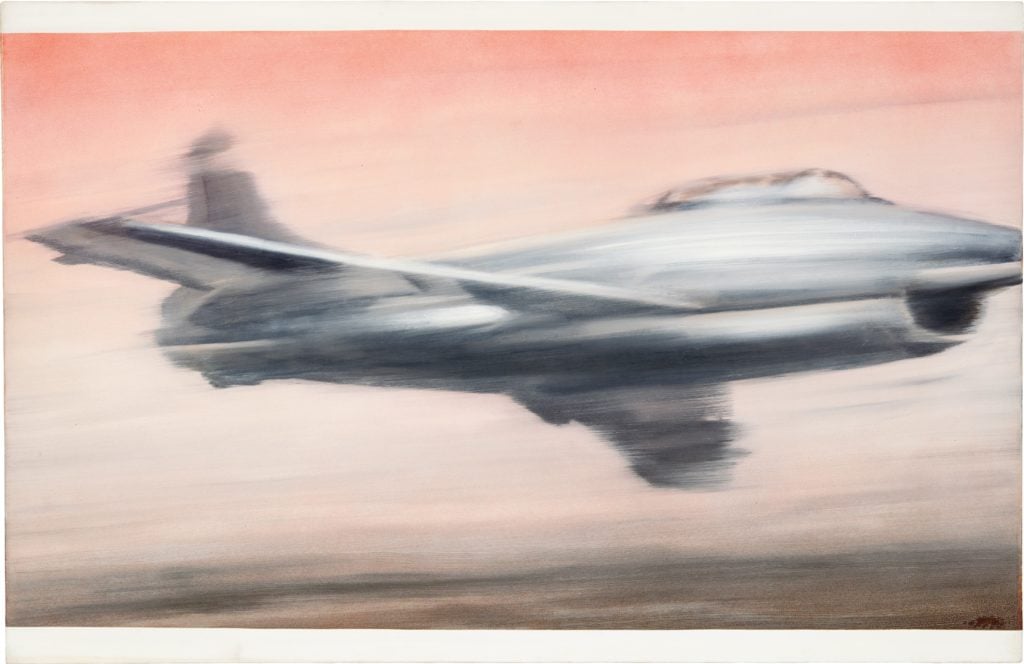
Gerhard Richter Düsenjäger (1963). Courtesy of Phillips.
7. On artists
“Now there are no priests or philosophers left, artists are the most important people in the world.”
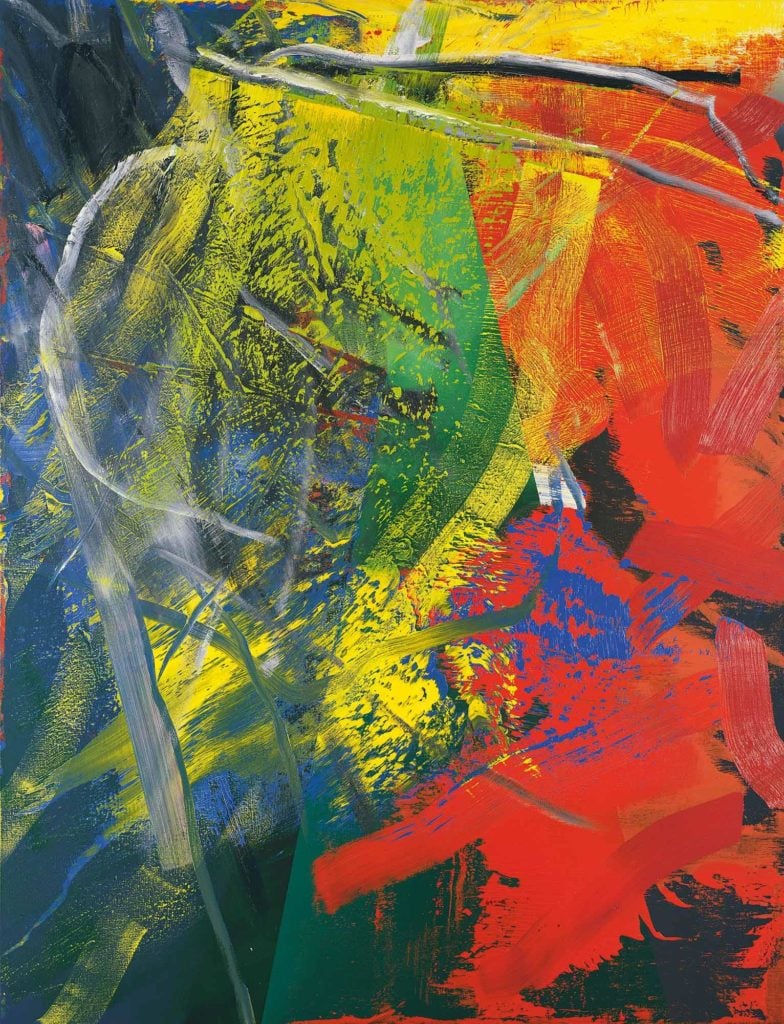
Gerhard Richter, Kegel Grid (Cone), 1985. Courtesy of Phillips.
8. On art itself
“Art is the highest form of hope.”

